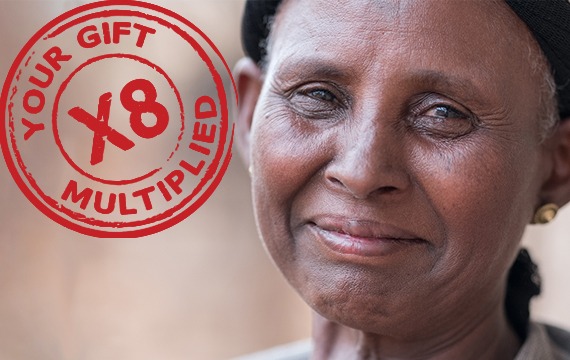Trachoma – Ethiopia
Description
Additional information
| Frequency | One-off, Every Week, Every 2 Weeks, Every 4 Weeks, Every Month, Quarterly, Annually |
|---|

This programme aims to improve the quality of life of people living in the Amhara region of Ethiopia by reducing the prevalence of blinding Trachoma. For the past twenty years, the poorest 25% of the world’s population were at risk from this highly infectious but neglected tropical disease.
THE NEED
Worldwide 36 million people are blind, yet 75% of blindness is preventable or treatable. The world’s leading cause of preventable blindness is Trachoma, a bacterial infection that causes a roughening of the inner surface of the eyelids. This roughening can lead to pain in the eyes, breakdown of the outer surface or cornea of the eyes, and eventual blindness.
Ethiopia has more than 30% of Africa’s already disproportionately high Trachoma infection rates. The national prevalence of active trachoma among children aged 1-9 years is 40.1%. Amhara is particularly at risk due to its remote location, limited water resources and widespread poverty.
Lack of awareness coupled with poor hygiene, sanitation and limited access to clean water increases the risk of infection. Over 50% of people in the Amhara region have no household toilet with many village latrines in a state of disrepair. Women are more susceptible to the infectious Trachoma than men because of their higher exposure to young children who are typically the bearers of the disease.
WHAT YOUR GENEROUS SUPPORT CAN HELP FUND
Through your generosity, this programme is implementing a S.A.F.E. strategy to control and eliminate Trachoma: Surgery, Antibiotics, Facial cleanliness, Environmental sanitation through the following means:
| Frequency | One-off, Every Week, Every 2 Weeks, Every 4 Weeks, Every Month, Quarterly, Annually |
|---|
cbm New Zealand
Freephone: 0800 77 22 64 (NZ only)
Phone: +64 9 414 9405
Email: enquiries@cbmnz.org.nz
PO Box 303477, North Harbour, Auckland 0751
Unit B, 112 Bush Road, Albany, Auckland 0632
Registered Charity: CC26154
Sign up to our newsletter
